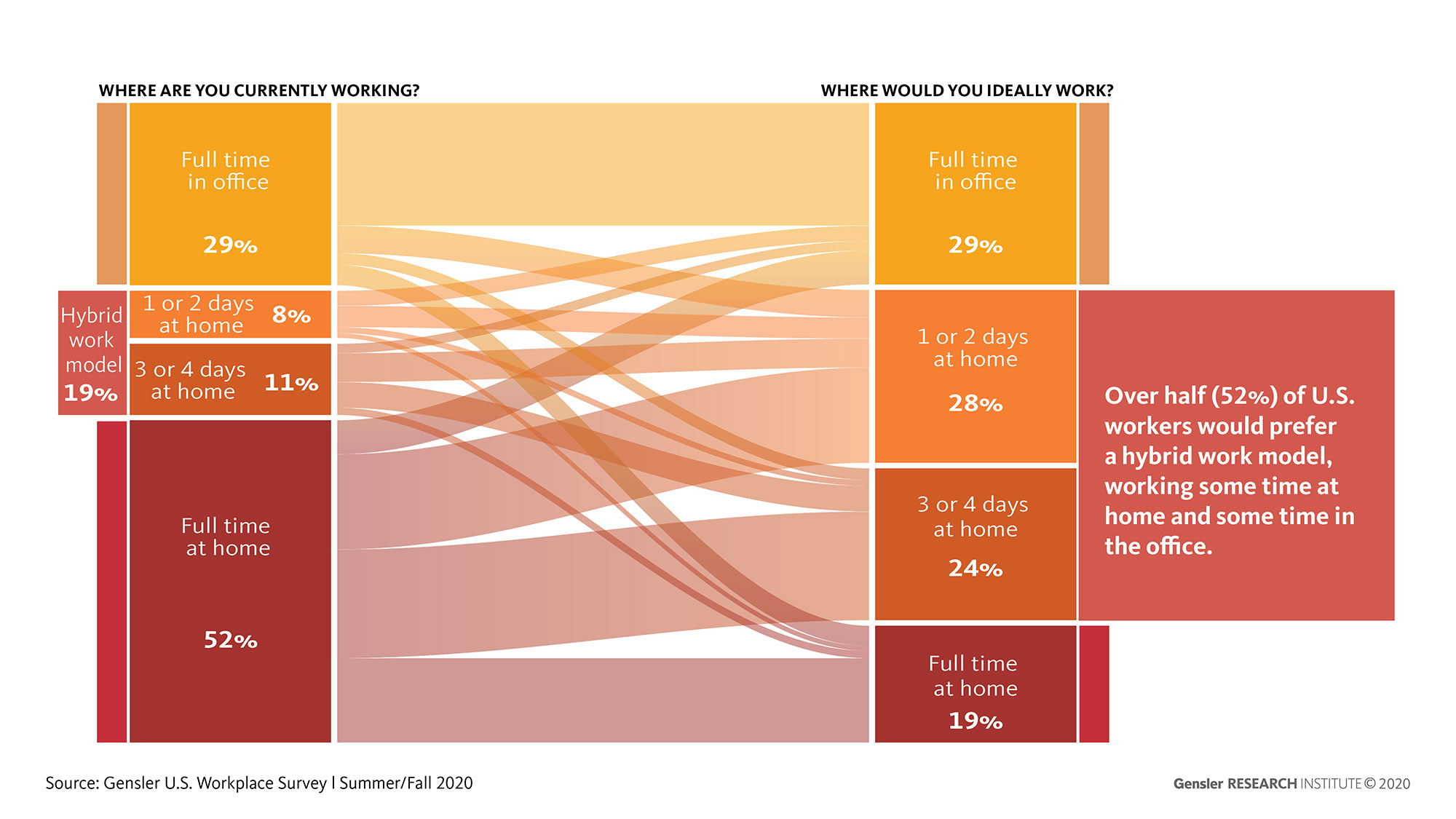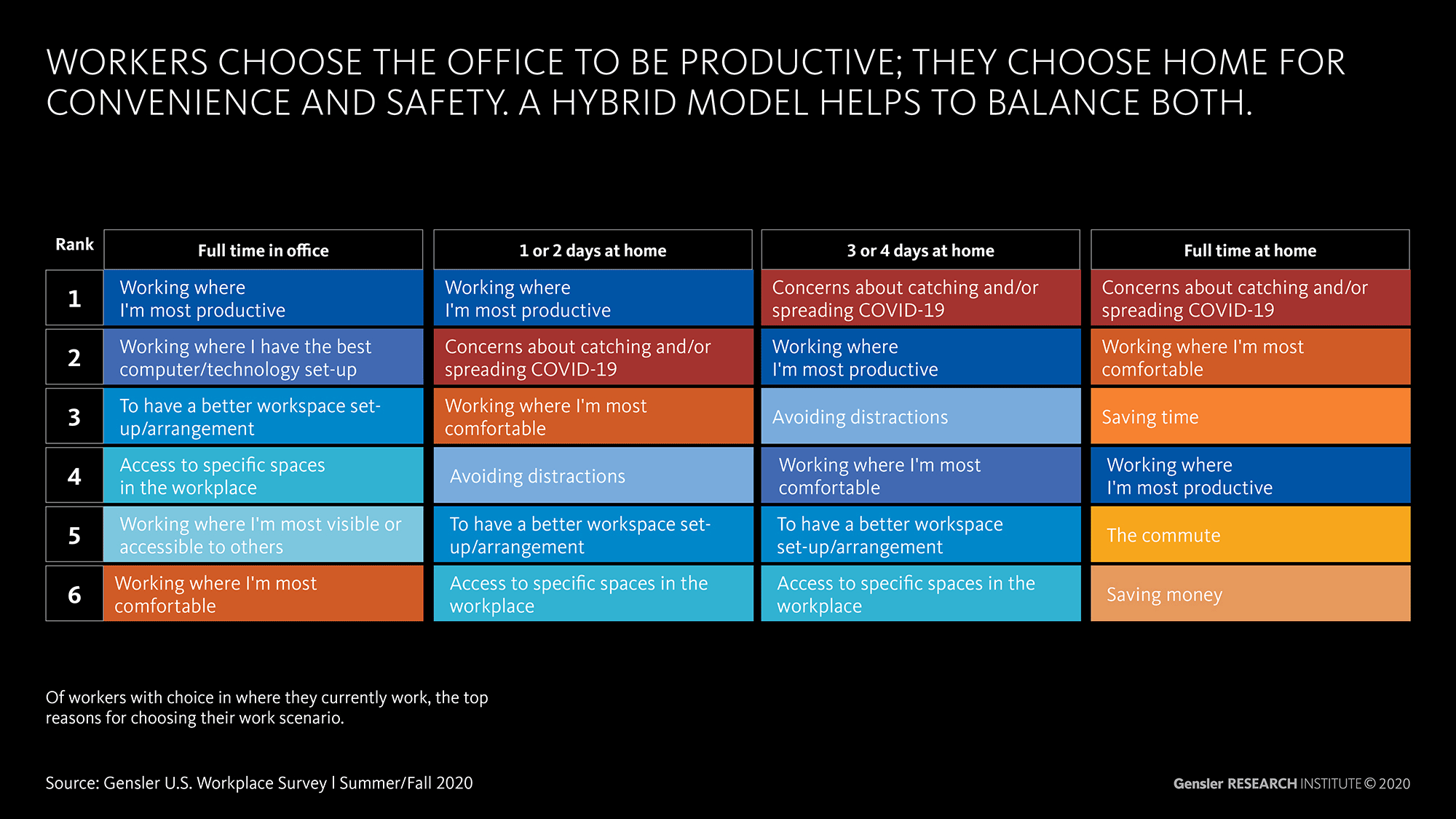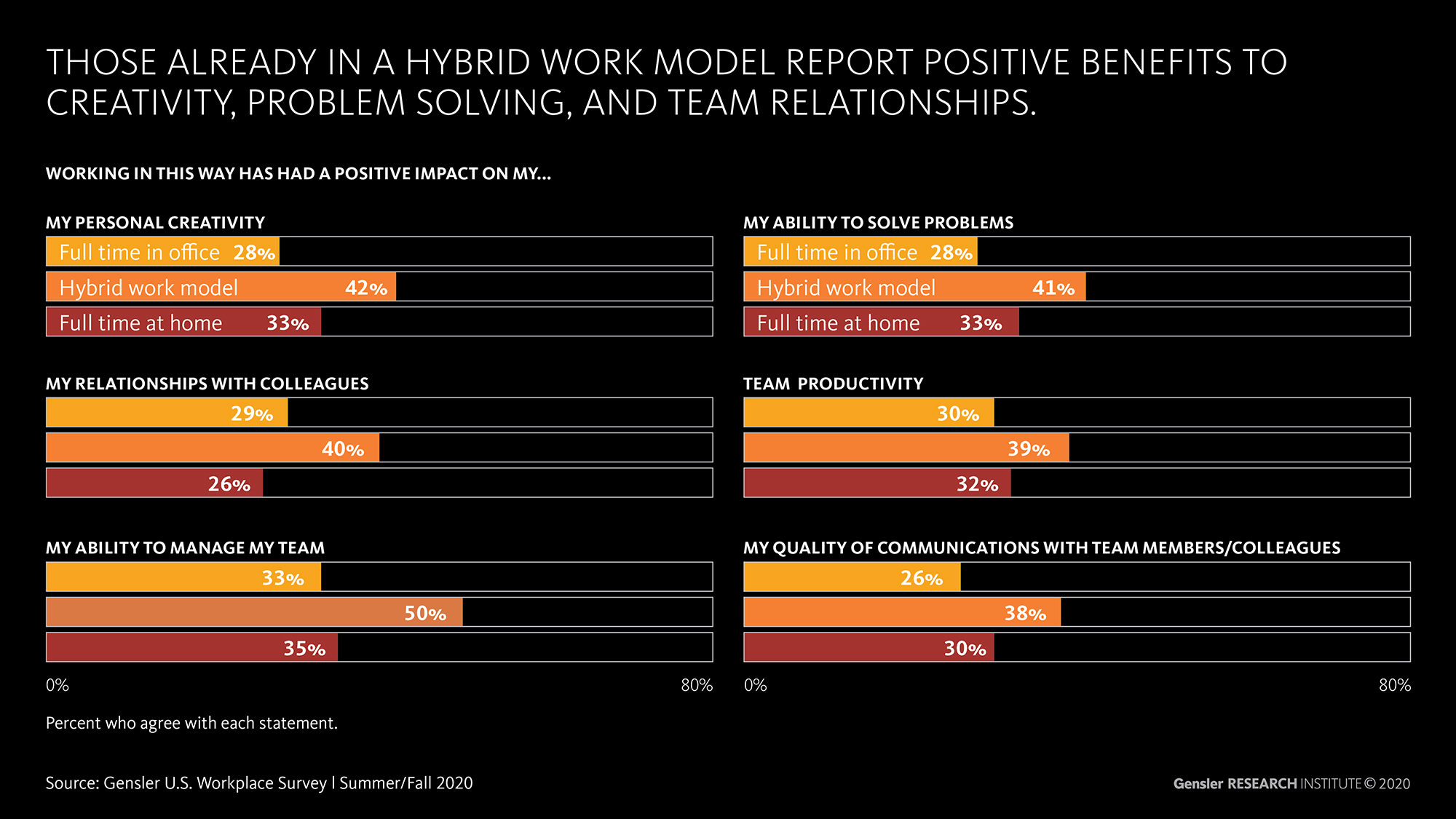Workers had spent at least six months working from home at the time Gensler's U.S. Workplace Survey 2020 was conducted. Informed by this experience, many U.S. workers expressed evolving expectations for the future of work and the physical workplace. As we look to the future, our data helps us explore how employers and workplaces can best support workers in a post-pandemic future.

Workers choose the office to be productive; they choose home for the convenience and safety. A hybrid model helps to balance both.
The most successful workplace strategies embolden employees with the ability to choose what works best for them. Most workers are in their current work scenario because of a company or governmental policy. But for those with the ability to choose where to work, respondents who are currently opting to return to the office are doing so because it’s where they are most productive. Those working mostly or full-time at home do so out of concern for COVID-19 and other convenience factors, suggesting work/life benefits associated with home-based working.

Those already in a hybrid work model report positive benefits to creativity, problem solving, and team relationships.
Gensler's survey data suggests that the benefits of a hybrid work model are quickly emerging, based on input from the 19% of workers who are already working partially at the office and partially at home. This hybrid workforce is exhibiting positive benefits including enhanced creativity, productivity, and quality of relationships.

U.S. Workplace Survey 2020 Summer/Fall Methodology
This survey of 2,300+ U.S. workers was conducted online via an anonymous, panel-based survey from July 22 to August 24, 2020. Respondents were required to be working full-time for a company, organization, or firm of 100 or more people, and to have worked in an office environment prior to the COVID-19 pandemic. At the time of data collection, respondents worked in a variety of scenarios: full-time from home, part-time in the office (hybrid work model), and full-time in the office. Respondents were evenly distributed across 10 industries and represent a wide range of seniority levels, roles, ages, and geographies across the U.S. For reference, respondents were categorized into the following generational cohorts: Generations Z and millennials (18–39 years old), Generation X (40–54), and Baby Boomers (55 and older).
Download the full Gensler U.S. Workplace Survey 2020 Summer/Fall report to explore how the workforce’s views are shifting as many begin returning to the office. Our data shows that U.S. workers want the flexibility to work from home, and they also have new expectations for how the office can support their evolving needs.
